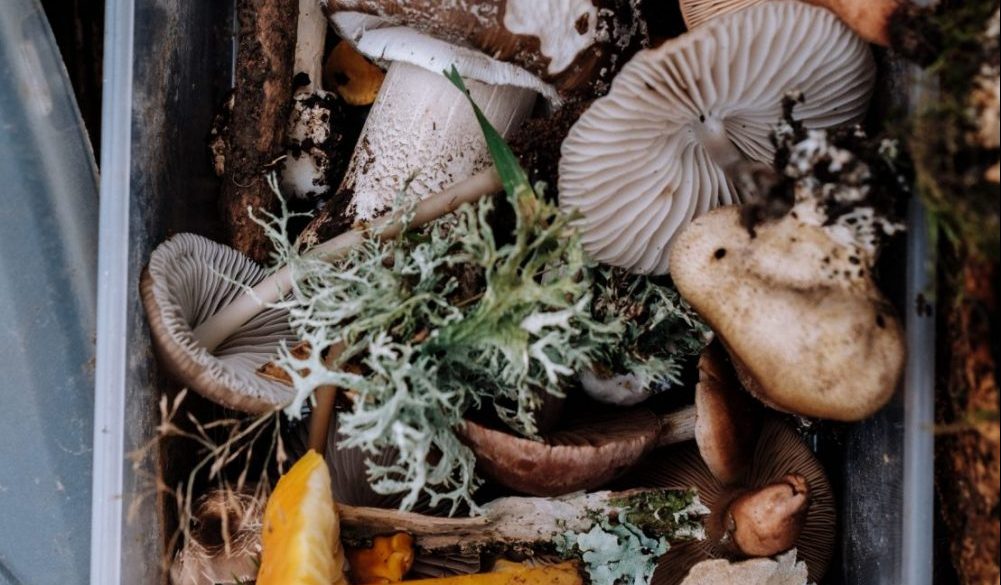
The Magic of Mushrooms
“The future of fashion is fungi” is highlighting in our headlines recently. The magical use of mushroom also continues to span to wellness and health industry and (of course) food. Not only that, but mushroom also proves themselves as stylish to boot. Renowned fashion house like Stella McCartney, Rahul Mishra, Iris Van Herpen and Hermès—to name a few—are using the humble and earthy mushroom as inspiration and material for their collection… Let’s delve into the mushroom’s realm!
Climate change has shifted business and corporate attitude towards eco-friendly materials. Consumers are more conscious about what they consume, the production process and the impact on the environment. The demands for green practice and products are elevating, and of course, the brands need to listen and, well…welcoming the fungi frenzy.

THE RISE OF MUSHROOM
Even though the use of mushroom in exchange for leather is trendy in the fashion’s sphere right now and sprouting up (even more) in other industries, but this appreciation of fungi is not new-found, and it goes hand in hand with biotechnologies. The discovery of mushroom properties dates back to the late ’60s—during this time, fungi made their way to medicinal discovery and religious traditions. Chinese believe in the healing powers of the reishi mushroom or “mushroom of immortality.” Reishi is the oldest mushrooms to be used in Chinese medicine to benefit the human immune system.
Research conducted by Paul Stamets and Heather Zwickey points out the variety of use and diversity effects of mushroom and the fact that they can severely harm us. But with technology and modern science, they state:
“We have recognised the value of mushrooms; we have started to cultivate them to exploit their medicinal purposes further… We are now fully engaged in a rapidly emerging scientific revolution in medicinal mushrooms.”
Alongside, scientists use mycelium—the threadlike vegetative of fungus—to replace plastic packaging material with a mindful one like the one Evocative Design does. They use mycelium for skincare product like a sheet mask. In the 1990s, Phil Rose introduced furniture made with mushrooms that awe many people; he created “easy chair”, table and even durable bricks—he constructed a teahouse out of mycelial bricks in 2009. In the art scene, he is known as a craft mycologist. London-based furniture maker, Sebastian Cox, is also one of the artists that embrace mycelium to create his masterpiece.
“The question isn’t, ‘What can fungus do? It’s, ‘What do you want it to do?’ Fungi are transformative agents in the truest sense of the word.”—Phil Rose
In the food and beverage industry, the different types of mushrooms provide various health benefits and vitamins. And because of their texture makes fungi thrive on the alternative market as coffee, juice, beer, and meat substitute. With the booming of plant-based products, the fungus is indeed making its own way to be the sought-after ingredients and a venture capital investment.

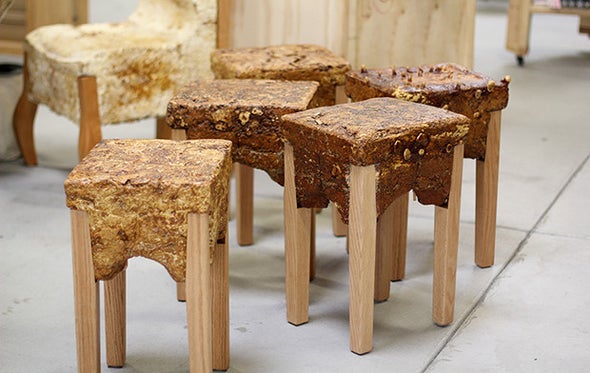
THE SHROOM BOOM IN THE FASHION SCENE
With fast fashion and everyday consumers, it makes us wonder if there is any way to purchase fashion with no guilt and not harm to the environment. According to United Nations, the fashion industry is one of the most polluting businesses in the world. The production of textiles and leather pose environmental problems, and not to mention their disposal.
Having said that, brands are challenged to tackle the problem and to be more sustainable in practice. The effort began with how the fabrics are made. Therefore, leather made from mycelium is considered a better option for the environment—low energy and biodegradability.
Dan Widmaier, the CEO of Bolt Threads, noticed that the fashion industry was in dire need to seek an eco-friendly alternative to its practice. In 2009 his biotechnological innovation company entered the industry and introduced mushroom fashion. Eight years later, in 2017, the company partnered with Stella McCartney to create an eco-friendly dress made from silk proteins spun by spiders. The step followed by establishing Mylo that specialised in mycelium production mainly for the fashion industry. Earlier this year, they teamed up to launch their first garment collection made from mushroom leather.
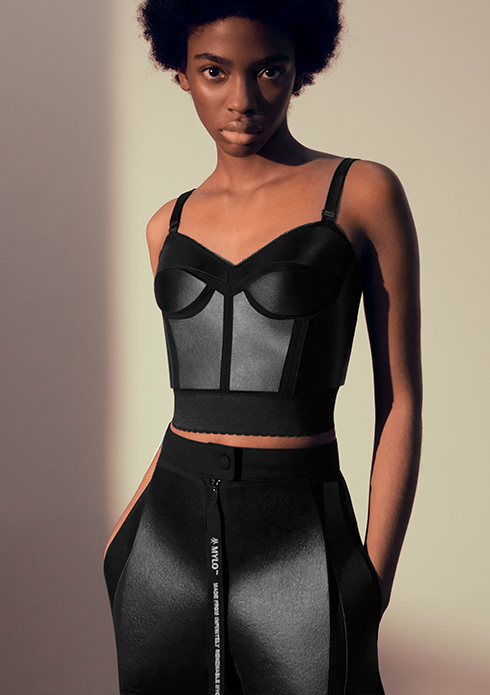
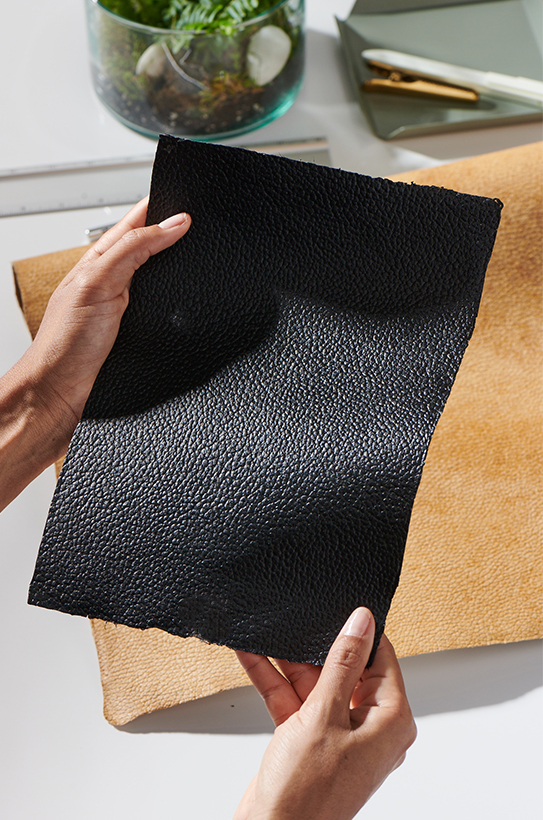
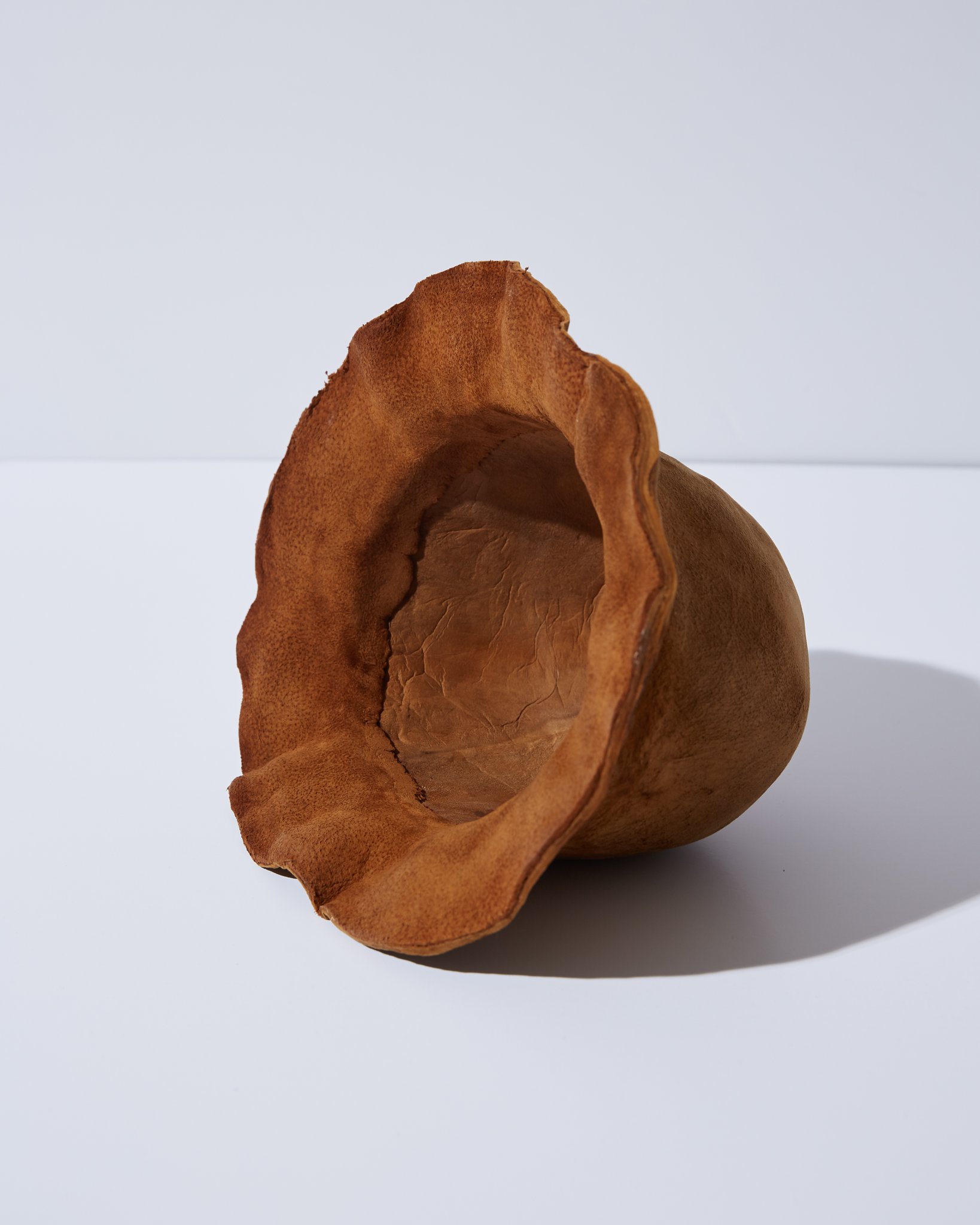
While mycelium is not accessible for many and exclusive only for big brands, EDEN Power Corp collaborates with small artisans. Issac Laroce and Florence Provencher Proulx, EDEN founders, introduced an eco-conscious streetwear brand to the market and their Spring Summer 2021 collection features “Mycelium” with the iconic Amandou mushroom hat.
According to MycoWorks, the limitation of mycelium leather is due to the agricultural processes used to cultivate mushrooms. Similar to producing fine wines or cheeses, it requires temperature, humidity control, and other environmental factors. MycoWorks, who recently collaborated with Hermès, launched Reishi in 2020. “Reishi is not leather. Reishi is more than leather,” said Matt Scullin, chief executive of MycoWorks. The company claims Reishi outperforms leather in strength and matches leather in durability and appearance,
“It feels like leather; it looks like leather, so we talk about it as leather, but it’s not leather. It might provide a better solution for the planet”—Matt Scullin.
The question is whether mushrooms will be the superhero for the fashion industry to offer a solution for the massive environmental problems that the industry faces. Perhaps, we can expect mushroom not as a saviour but more into “a hope for a better tomorrow.” Looking at the nature of fungi—biodegradable, colourful, strong, edible and possess medicinal properties—mushroom is indeed going to stay for a long run.
+ Words: Alvia Zuhadmono, Luxiders Magazine








